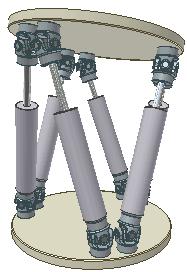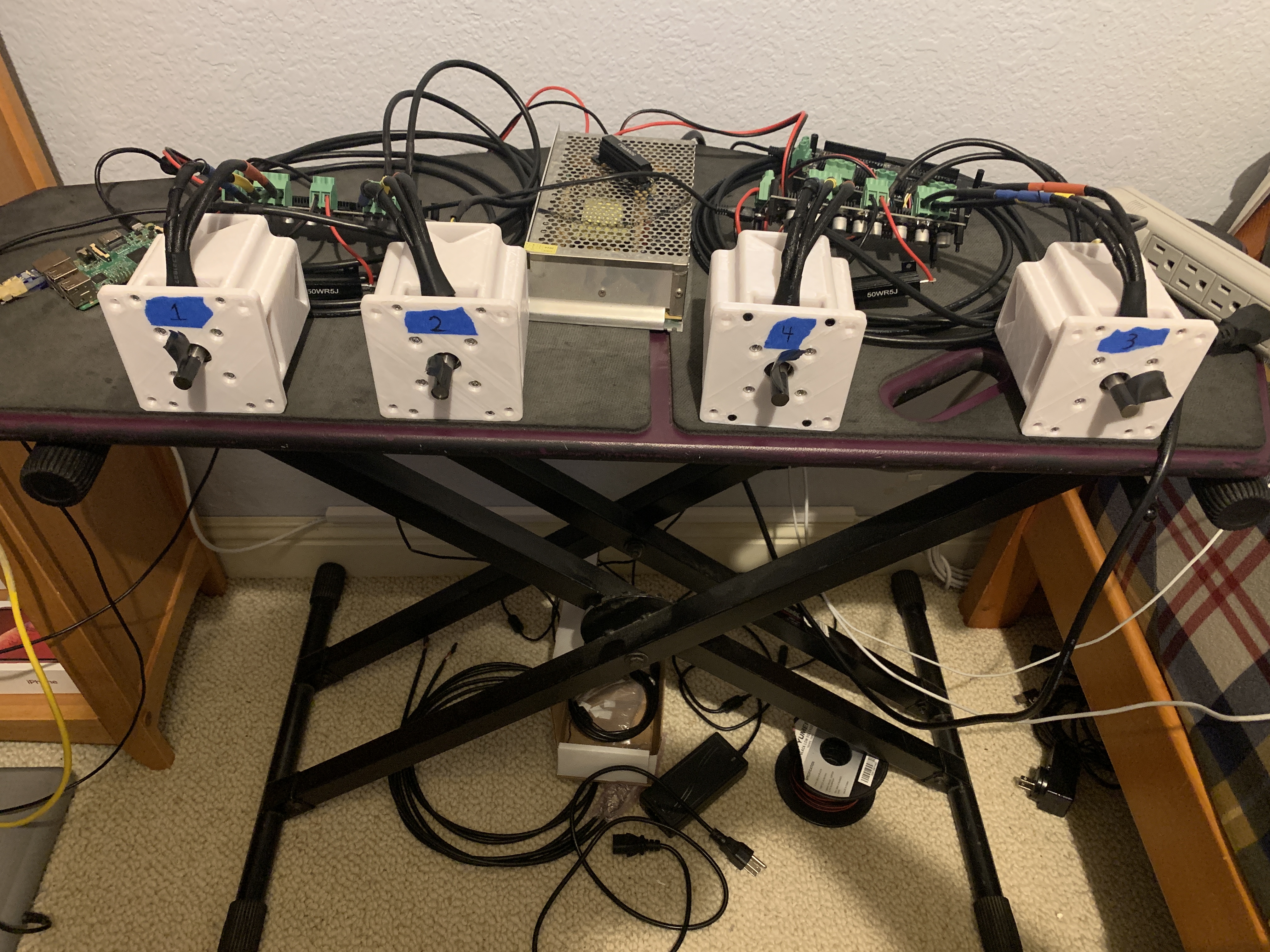Flight Simulator
May 2021

In March 2021 during my junior year of high school, my AP Computer Science teacher told the class about Advanced Engineering Honors. It was a class he offered for students who had taken at least two years of his classes, in which students spend the first semester of the year brainstorming, researching, and designing somewhat of a senior project. Then in the second semester, parts and materials within a budget are purchased and each student builds, tests, then finally presents their project.
During summer of 2024 I visited my high school engineering/cs teacher and got to use the simulator, still functioning two years after my graduation!

As soon as my teacher told us about the class, I knew I had to take it. That day after class, I stayed late in the Zoom call to find out more about it – find out where the “bar” is set. We discussed previous projects briefly, then I told him my idea: a full motion flight simulator. He loved it immediately. Miraculously, the program already had a grant from a local Aerospace company, for any related projects. At first I wanted to make a scale version using servos and piano wire, but upon the news of the grant, I knew I could make it real.
Without hesitation, I began researching. I knew I wanted to use a Stewart Platform, so I wrote down different ideas that I wanted to learn more about, such as the use of hydraulics/pneumatics, versus electronics to control the 6 actuators.

While researching, I remembered about a Michael Reeves Video where he used brushless motors with something called ODrive to make them extremely precise. It was an incredible motor driver that could harness the power and speed of a brushless motor, and use a rotary encoder to make it as precise as a stepper motor.
I now had somewhat of a game plan; I had to design 6 linear actuators, driven by brushless motors. I began designing. I tried several iterations taking inspiration from other DIY simulators, or other electronic Stewart Platforms. Just before the school treasury stopped taking orders, I had a basic parts list ready. We were able to order, and I began testing with the electronics and software over the summer.
I used the ODrive documentation to calibrate and tune the motors, then used a data stream to control 4 motors at once. I also continued to work on my Fusion 360 model of the actuator, so that when the next school year started, we could jump the gun to get new parts on the way.

The first semester of the school year was almost entirely spent building the first version of the actuators. There was lots of 3D printing, laser cutting, drilling and tapping, and more operations. When all 6 were complete, I built up a quick cardboard base and wood top to test the hexapod software.
After a successful first prototype, I moved forward with upgrading the “base” the hexagonal platform that holds the bottom of each motor, and the “frame” the contraption that is moved by the actuators, and holds up a seat, pedals, and steering wheel/yoke. I continued in Fusion 360 to design the two parts in CAD.
More info to come ...